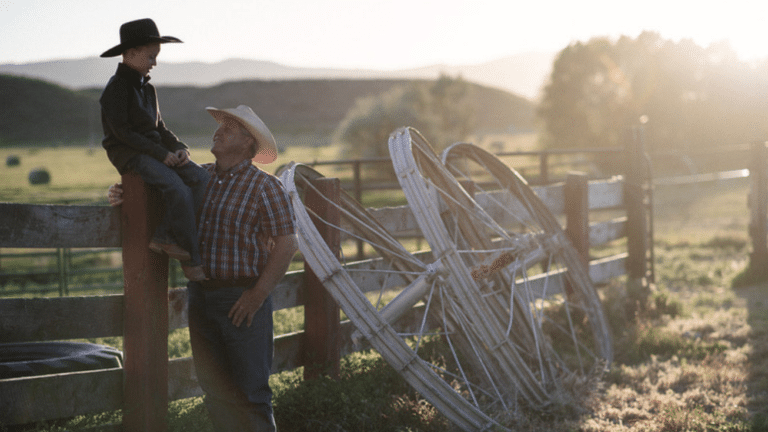From Farmers to Consumers: Shifts in U.S. Food Supply Since COVID-19
COVID-19 Could Change the Way Farmers Connect with Consumers Permanently.
Without a doubt, the food supply chain in the United States has experienced unprecedented strain in recent months. COVID-19-related factors that have pressurized the system include:
- Nonessential business closures;
- School and university closures;
- Shortages in farm labor;
- Reduced production in processing plants; and
- Logistical bottlenecks.
These unforeseen disruptions from the pandemic abruptly shifted consumer demand and forced many agriculture producers to rethink the way their products move from the farm to consumers. COVID-19 put the fragility of our food supply chain in the spotlight, but farmers and ranchers have truly risen to the challenge of quickly adapting their operations to continue meeting the needs of consumers.
Ways Farmers are Meeting the Direct-to-Consumer Demand
Technology has made it possible for farmers to connect directly with customers in more ways than one. Many farmers and ranchers have implemented digital strategies to move produce off their fields and onto our plates. The COVID-19 pandemic accelerated the transition of agriculture to a more virtual space in a way that will likely continue once the crisis dissipates.
Social Media
Social media platforms—such as Facebook and Instagram—have become increasingly popular for farmers to stay in touch with consumers who are searching for local farms in their area. While farmers have been updating their social media profiles with lists of produce available for purchase, ranchers have collaborated with local butchers to directly connect with consumers. Farm to consumer websites, such as FarmShake, have emerged as online platforms to build direct sale connections and are using Instagram to reach a wider audience.
Many farmers have begun utilizing social media messaging systems to receive orders directly through their profiles. Online form systems have also helped farmers keep up with demand, track inventory, and filling orders.
Community-Supported Agriculture (CSAs)
Community-supported agriculture is on the rise and likely to stay a trend beyond the COVID-19 crisis. This type of business model involves shares paid by consumers that fund operational expenses. Their subscription guarantees a customer base for local farmers growing a diverse selection of crops. Members receive a box of fresh, locally grown produce on a consistent basis. These products are not limited to produce but can also be used for other farm-raised products, such as cheese, flowers, eggs, and more.
Government Resources and Directory Pages
Direct Sales Software Platforms streamline the direct-to-consumer process and are particularly attractive for farmers who want to avoid the website building process. These websites contain informative resources for farmers and ranchers who have begun entering a more virtual space in light of COVID-19 with little technological experience. Direct sales software allows farmers and ranchers to:
- Build an integrated website;
- Sell by weight;
- Establish an online shopping system;
- Home deliver product;
- Track orders;
- Manage inventory; and
- Minimize human contact.
Government resources have also connected farmers directly to consumers during the COVID-19 pandemic. Resources available vary from state to state and include everything from farm lists to local food directory pages. Agriculture organizations are doing their part as well to provide additional platforms for direct-to-consumer sales. Some examples include:
- Florida Farm To You: allows Florida growers to submit products available for purchase. It also connects growers with transportation services if needed, to get products to consumers and businesses once purchased.
- Maryland Farmers Market Association: provides an interactive guide with resources that connect you to direct-buy, pick-up, and home delivery options during COVID-19 in the mid-Atlantic area including Washington D.C., Delaware, Maryland, Pennsylvania, Virginia, and West Virginia.
- R-Calf USA: enables independent cattle producers to connect directly with consumers in their local area through an online platform.
- USDA Local Food Directory: connects consumers and businesses with farmers markets, on-farm markets, food hubs, and CSAs.
- USDA National Farmers Market Directory: lists markets that feature two or more farm vendors selling agricultural products directly to customers at a common, recurrent physical location.
The Future of Agriculture Beyond COVID-19
Agriculture has adapted at an accelerated rate during the COVID-19 pandemic with farmers facing the crisis head-on. With most adaptation, there is an initial learning curve. It is through this learning curve, that many farmers will develop more agile and resilient distribution procedures that better equip them for what the future holds. There is a strong possibility the transition to a more virtual space will remain a part of business and farming culture in the future. As a critical infrastructure, agriculture will continue to evolve in any way necessary to ensure the food security of our nation and the world.
Technological adaptation can create initial expenses that pay off later but require working capital and time as they are learned and put into effect. Farmers and ranchers are accustomed to volatile markets and understand the importance of working capital during lean times and economic uncertainty. As a firm supporter of the American Farmer, AgAmerica is here to help with the resources and financing needed to adapt to a changing world.






